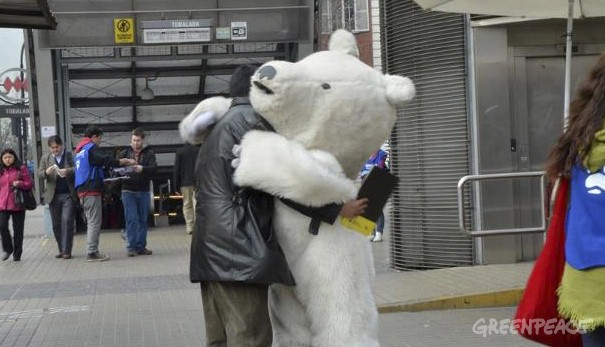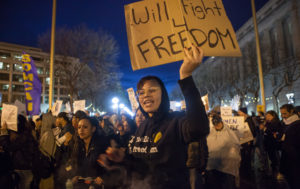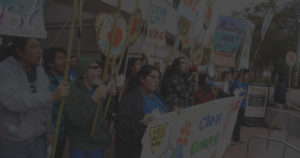Staff, volunteers, and unknown external campaigners in Chile came together in unprecedented ways to recruit over 104,000 people from the street to help protect the Arctic — far exceeding the results of Greenpeace volunteer teams in other offices around the world.
We aren’t certain that everyone received a polar bear hug like the one pictured here, but bear costumes, flexibility, restructured staffing, and distributed campaigning (plus a lot of hard work) helped a national office of under 30 people meet what many would consider an unreasonably big goal.
A final push – a national day of signature gathering – happened on Friday, 31 August, in ten Chilean cities. Over 18,000 people signed up to support the Arctic in a single day. We spoke with Sergio Corrales and Matías Asun of Greenpeace Chile about how it happened.
Matías Asun identified four keys to making this happen:
- One goal, one team. The campaign and its message was clear internationally and in Chile. This made it possible to work with common goals, resolve conflicts and use a common language when getting attention and talking to people on the street.
- A staffing structure built for the objective. Every staff member was involved in the campaign. That meant everyone (including the national director) working on the streets to get signatures. Not surprisingly, this required a lot of flexibility from every staff member and, according to Matias, “seemed impossible at the beginning.” All had other responsibilities and many didn’t consider signature gathering the best use of their skill and time. Everyone came together though around a higher goal: protecting the Arctic.In the first week, staff and volunteers were organized into four task-oriented teams: Street Force, Actions, Comms, and External Campaigners. We cover these in more detail below but the ability and willingness of people to reorganize and distribute work was critical to campaign success.
- Everyone worked together. You hear this a lot: “we all worked together as a team.” In this case it was very true. That doesn’t mean that everyone had a voice in every decision, though. Each of the four teams (Street Force, Actions, etc.) had a coordinator who met daily with other coordinators. This small working group dealt with plans and problems collectively. Matias Asun assumed responsibility for resolving tough problems and keeping the campaign moving forward.
- Online and offline media saturation meant not having to explain so much. One of the hardest parts of face to face signature gathering is getting a complete stranger to give you enough time to tell them what this is all about. After several weeks of intense media outreach (with a message that people can save the Arctic by signing this petition) it became progressively easier to gather signatures.
In the first two weeks, four local volunteer teams gathered 8,000 signatures. In one day last week, the campaign gathered 18,000 using staff, volunteers and external campaigners in 10 cities. People that the campaign met on the street were likely to know what was going on (especially if they saw the polar bear), making the signature getting process faster, simpler and more successful.
Success breeds success — more people wanted to help gather signatures as it became a more pleasant and empowering experience.
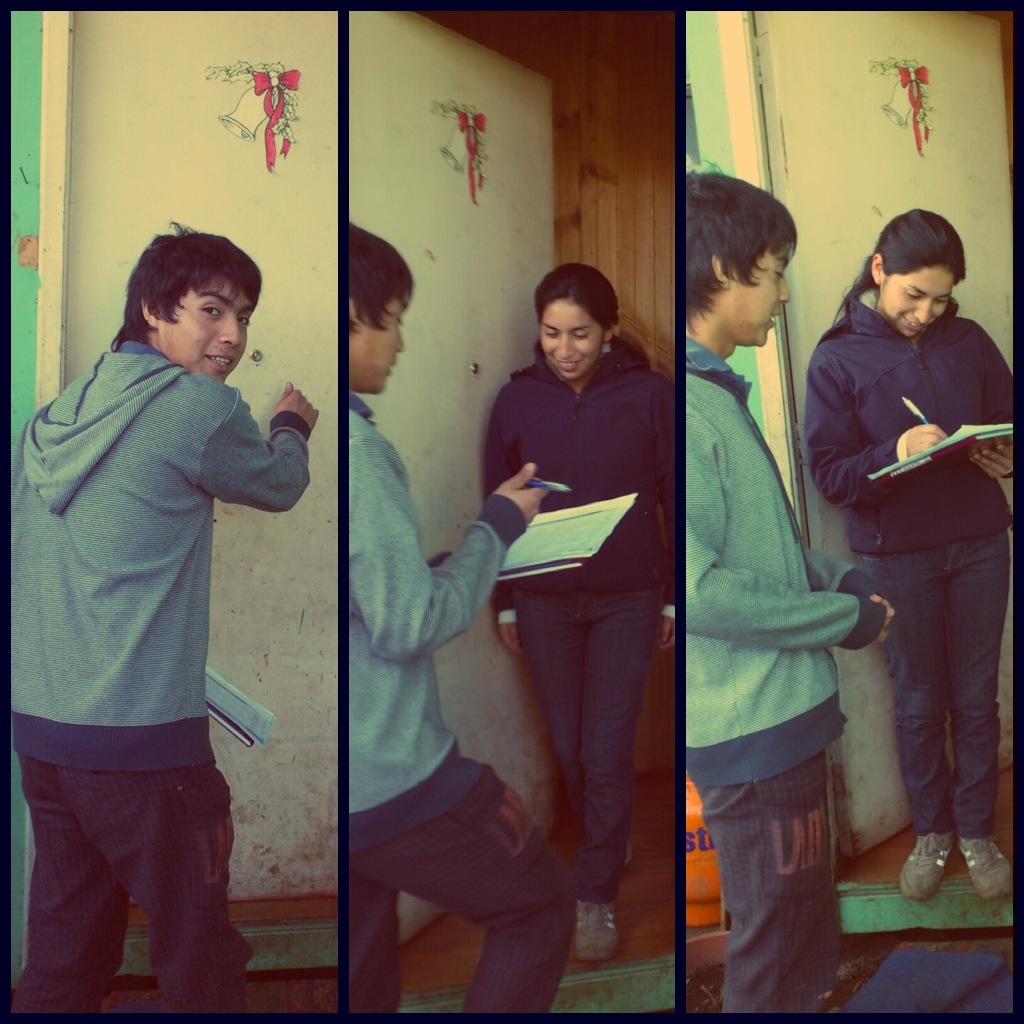
Shakin, an external campaigner working to gather signatures for the Arctic.
A new structure for a single goal
To emphasize that this campaign wouldn’t be successful with business as usual approaches, the office reorganized itself into four task-oriented teams:
The Street force, coordinated by Sergio Corrales, focused on gathering signatures on the street. They were joined by someone in a polar bear costume at almost every event. Sergio was joined by someone from the Volunteers team, a Direct Dialog coordinator, office manager, general assistant and campaign assistant. The street force coordinated staff engagement in signature gathering. Local events around the country were completely set up and run by local volunteers.
The Events group was coordinated by a member of the Actions team, a member loyalty coordinator and other office support staff. This group was responsible for preparing and implementing campaign actions and events.
The Comms team (led by the office communications coordinator, press office and a member assistant) focused on media coverage, message promotion and working with celebrities. Saturated media coverage (and the iconic polar bear at events) helped make signature gathering progressively more successful.
Of the four teams, External campaigners may have been the most intriguing. Internally, this group was coordinated by a new media staffer, publicity manager, and campaign coordinator. The purpose of this team was to engage people, primarily those that came to Greenpeace Chile via online petitions. Individuals were given encouragement and tools to help them to run their own face to face petition campaigns.
Each person was asked to collect 40 signatures. Data isn’t available yet on just how many external people gathered signatures but, so far, external campaigners have gathered over 8,000 signatures, primarily in cities and towns where staff and volunteers have not focused their time. Phone and email were used to work with these people, who were previously unknown to staff.
The primary campaign website – http://www.firmaporelartico.cl (and see screenshot below) – was set up to help tell the story of the signature gathering and support citizens. Successfully extending the reach of the campaign by distributing campaigning to people nationwide is one of the big stories of the project. It will be helpful to see how engaged these people are in the future and additional ways that Chile and other offices identify and support external campaigners.
Engaging and motivating volunteers
Volunteers in Santiago, Temuco and other cities played a key role in signature gathering. Volunteers are different than external campaigners because they are people with an ongoing relationship with the Greenpeace Chile office, likely participating in past campaigns.
A private Facebook group was used to help inform and motivate volunteer groups. Volunteer leaders would report their results to others in the Facebook group across Chile and challenge them to do better. Groups sought to improve results and (of course) beat the efforts of staff signature gatherers.
It took focused work over two months by staff, volunteers, and citizens to gather over 100,000 signatures for the Arctic (a part of the world far away from Chile). All involved needed to be flexible, willing to try new approaches, and open to handing off responsibility to new people.
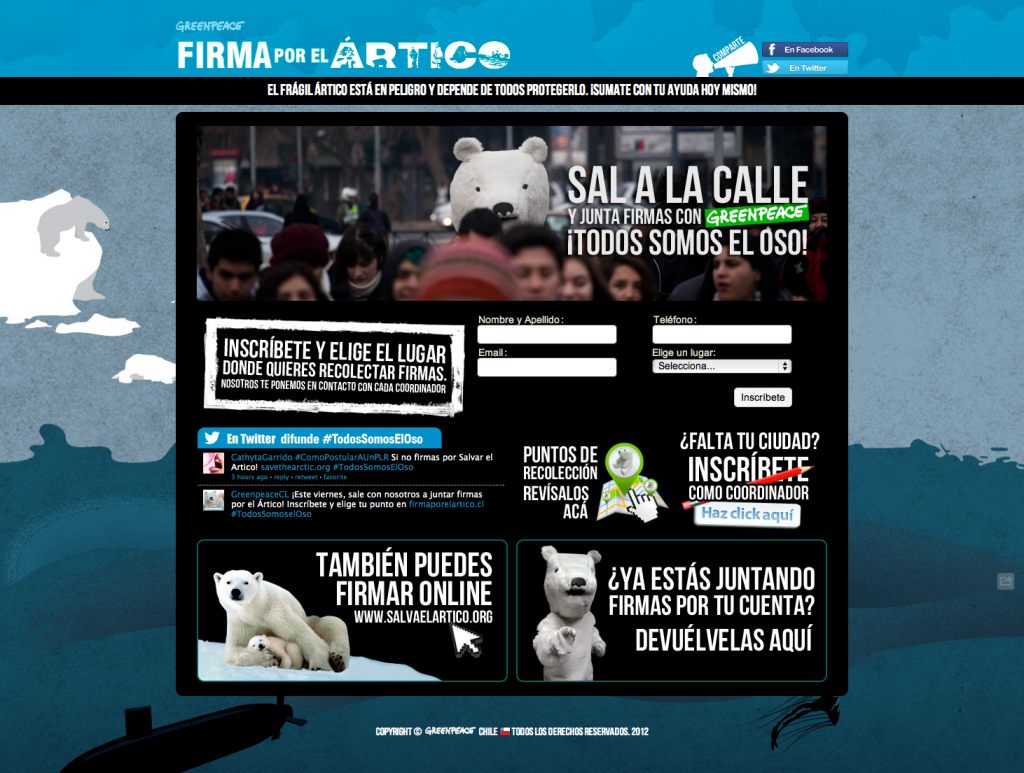
Firma por el Artico was the online hub for information and recruitment in the pledge for the Arctic campaign.
